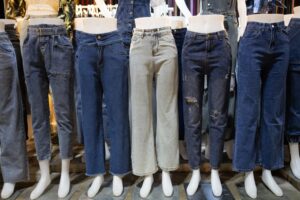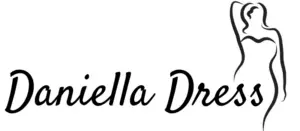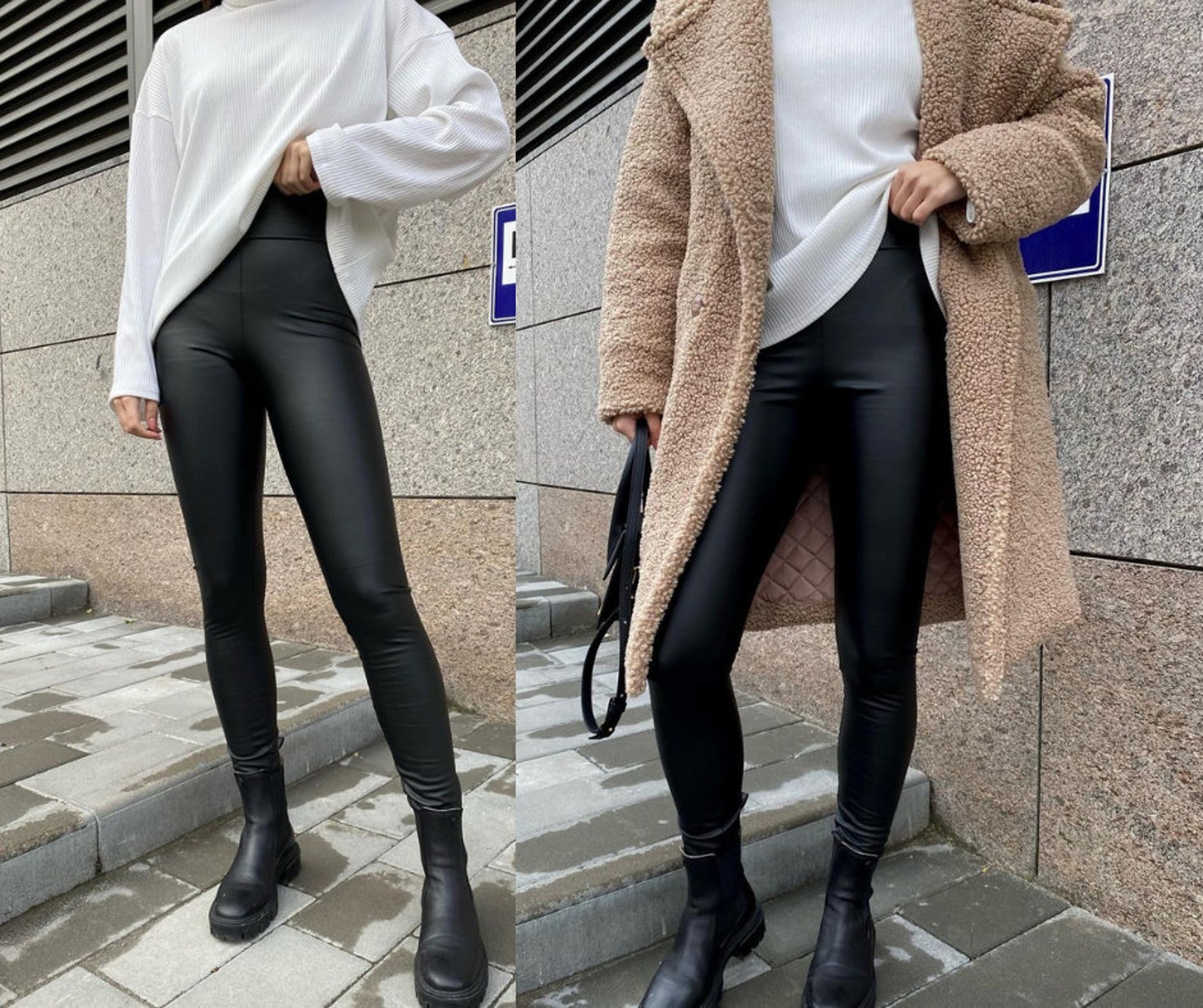Pants
Pants Trends 2024
Pants have evolved into an essential component of modern attire, worn by people of all ages and genders worldwide. They come in a variety of forms, ranging from the classic denim jeans to dress pants, and serve multiple purposes, from practicality to fashion statement. Given their versatility, pants are regarded as a fundamental item within a person's wardrobe, adapting to various style preferences and occasions, whether for professional settings, casual outings, or athletic activities.

The manufacturing of pants considers various fabrics and designs to cater to different needs and tastes. Common materials include cotton, denim, polyester, and wool, allowing for a broad spectrum of textures and comforts. With a growing awareness and emphasis on personal style, the market for pants has expanded, providing consumers with a plethora of options. This includes a range of fits such as slim, straight, or relaxed, as well as a myriad of colors and patterns to choose from.
Pants function as more than just a clothing article; they are a reflection of cultural trends and individual identities. As fashion continues to evolve, the reinvention of pants persists, with designers and brands often pushing the boundaries of traditional forms to innovate and inspire. The result is an ever-changing landscape of clothing that captures the spirit of the times while maintaining the enduring practicality that has made pants a staple in fashion throughout history.
The Evolution of Pants
Pants have come a long way since their inception. Initially, trousers were mainly made from heavy materials like wool or cotton for durability and warmth. The transition from breeches to trousers in the 19th century marked a significant shift in men's fashion.
Chinos and khaki pants emerged as lighter alternatives, originally designed for military use due to their robust fabric. They gained popularity for their comfort and eventually became a casual wear staple. Chinos in particular are known for their versatility, worn in both casual and semi-formal settings.
Jeans, made from denim, revolutionized the world of pants in the late 19th century. Denim proved to be an incredibly durable material, suitable for labor-intensive tasks. However, it wasn't long before jeans crossed over into everyday wear and became a cultural icon.
Dress pants maintained their position as the go-to option for formal attire. Tailored from fine fabrics, they offer a sleek silhouette and are a mainstay in professional and ceremonial clothing.
The introduction of cargo pants added functionality to the realm of casual wear. Recognizable by their large pockets, they catered to utility over formality.
- 19th Century: Transition from breeches to trousers
- Chinos: Casual and semi-formal versatility
- Khaki Pants: Durable military origins
- Jeans: Durable denim for work and leisure
- Dress Pants: Formal occasions, tailored fit
- Cargo Pants: Functional design, ample pocket space
Pants continue to evolve, adapting to trends and demands while keeping practicality and aesthetics balanced. The transformation of pants over the centuries reflects changes in society, technology, and fashion sensibilities.
Types of Pants
The variety of pants caters to a spectrum of styles, occasions, and functionalities. Each subcategory offers distinctive features, from the fabric to the fit, aligning with the unique sartorial preferences of individuals.
Casual Pants
Casual pants are the cornerstone of a relaxed wardrobe, appreciated for their comfort and ease of wear. Jeans, a timeless staple, are renowned for their durability and myriad of styles. Chinos offer a slightly elevated look while maintaining a casual vibe with their lightweight cotton twill fabric. For an outdoorsy appeal, cargo pants with their characteristic large pockets are a practical yet stylish choice.
Formal Pants
In contrast to their casual counterparts, formal pants such as dress pants and tailored trousers reflect sophistication and professionalism. These bottoms often feature smooth, fine fabrics like wool and worsted blends, suitable for business and formal events. Business casual attire may include tailored khakis, presenting a blend of smart and approachable.
Versatile Pants for Various Occasions
Certain pants transcend the casual-formal divide, making for a versatile component in a collection of pants. Khaki pants are a classic example, effortlessly fitting into multiple settings with the right pairings. Another versatile option is dark-wash jeans, which can be dressed up or down depending on the occasion.
Athleisure and Comfort Wear
Athleisure has blurred the lines between activewear and casual fashion, bringing items like joggers and leggings into everyday apparel. They offer a chic yet comfy alternative suitable for various activities, pairing well with sneakers and tailored tops. Sweatpants for men and women alike have evolved beyond gym wear to become a staple of modern comfort.
Shorts and Their Role in Fashion
Shorts have carved out their niche in fashion as an indispensable item for warmer months or athletic pursuits. They range from denim cut-offs to tailored chino shorts, each serving a purpose in styling for comfort or appearances. In recent years, shorts have seen an uptick in popularity, with innovative styles making them appropriate for more than just casual wear.
Understanding Fit and Style
Selecting the right fit and style of pants is vital for one's comfort and appearance. The perfect pair combines the elements of fit — snug to the body but not restrictive — with a style that complements one's individual body type and personal aesthetic.
Finding the Right Fit
Regular Fit: For a classic silhouette, the pants should conform to the waist without being too tight, allowing for a straight leg that offers room without being baggy.
Slim Fit: These pants have a narrower cut that follows the body's contour more closely. The fit should be snug but not constraining, offering a more modern and tailored appearance.
Relaxed Fit: Ideal for individuals seeking comfort, relaxed fit pants are roomier through the seat and thigh with a wider leg opening, providing maximum ease of movement.
Styling Tips for Different Body Types
- Tall and Lean: Slim-fit or tailored styles create an elegant and proportionate look.
- Athletic: Look for pants with a slight taper to accommodate muscular thighs and calves while still accentuating the body's shape.
- Fuller Figure: Straight-leg styles deliver a neat and flattering silhouette without clinging to the body.
Pants as a Style Statement
Casual Chic: Pairing straight-leg jeans with a crisp t-shirt and sneakers offers a timeless casual look, while a slim-fit chino with loafers can provide a slightly elevated edge.
Formal and Tailored: For business or formal events, tailored dress pants with a matching blazer project sophistication. The lines should be clean, and the fit should be close to the body, enhancing the overall stylish demeanor.
Pants in Everyday Life
Pants serve as a pivotal element in one’s wardrobe, often dictating the line between formal and casual occasions. They can enhance a professional appearance for work, ensure comfort during relaxing weekends, or add a touch of style to the mundane task of running errands.

Work-Appropriate Pants
When it comes to the workplace, business casual pants are a staple. For men, a pair of well-fitted chinos in a neutral color can seamlessly blend with a dress shirt or a polo t-shirt, offering both style and functionality. Women might opt for tailored slacks or pencil pants, which pair elegantly with a blouse or a smart tunic. Both of these pant styles maintain a professional demeanor without restricting comfort during long work hours.
Weekend and Leisure Pants
The weekend ushers in time for relaxation and leisure activities, where comfy pants reign supreme. Lounging around the house calls for softer materials like cotton joggers or stretchable leggings that allow for freedom of movement. One might pair them with a simple t-shirt or a cozy sweater for an ensemble that epitomizes comfort, suitable for a lazy Sunday or a family movie night.
Running Errands in Style
For the tasks that require stepping out, such as running errands, one finds solace in casual pants. These might include a pair of sturdy jeans or flexible cargo pants, which not only offer pockets for carrying essentials but also pair well with versatile tops, from t-shirts to light sweaters. Women might prefer capris or soft linen pants that allow for ease of movement while projecting an effortlessly chic appearance, complete with practical accessories like a crossbody bag to keep hands free.
Accessorizing Pants
Pants form the foundation of an outfit, and choosing the right accessories can transform their look from ordinary to eye-catching. This section explores how one can elevate their style through select add-ons and cultivate a versatile wardrobe to compliment a collection of pants.
Choosing the Right Accessories
When it comes to accessorizing pants, the key is to select items that enhance the outfit without overwhelming it. Belts are a practical choice, adding both function and flair. For example, Nordstrom suggests a thin black or brown belt with metallic accents as a timeless addition that pairs well with various pant styles. On the other hand, for those looking to make more of a statement, sartorial choices such as a colorful scarf or a patterned belt can draw the eye and add a personal touch.
- Belts: Consider the width and buckle. A sleek belt for office trousers or a chunky one for casual denim.
- Shoes: Align with the occasion. Heels elevate, while sneakers keep things casual.
- Jewelry: Minimal for sophistication or bold for impact. Cufflinks or a classic watch can refine a look.
- Bags: Function meets style. A briefcase for work or a leather clutch for the evening.
Building a Versatile Wardrobe
A versatile wardrobe requires a strategic approach, focusing on quality over quantity. Every piece should serve multiple purposes, allowing for numerous styling options. A staple such as a blazer can be a game-changer, offering both a formal and casual look when paired with different accessories. When building a collection, aim for accessories that harmonize with multiple pant styles in your wardrobe.
- Start with Classics: Solid-colored belts, leather shoes, and discreet jewelry.
- Incorporate Textures: This adds depth. Think suede, tweed, or patent finishes.
- Invest in Quality: Choose well-crafted pieces that withstand daily wear and shift seamlessly between different styles of pants.
- Consider Interchangeability: Accessories that work well across your collection of pants.
By attentively selecting accessories and focusing on building a wardrobe that's both versatile and stylish, one can effortlessly adapt their look to suit any occasion.
Care and Maintenance
When it comes to maintaining pants, individuals should follow certain procedures to ensure their longevity and appearance.
Washing: Always refer to the manufacturer's label for specific washing instructions. Generally, pants should be turned inside out before washing to protect the fabric. Opt for cold water and gentle cycles to prevent shrinking and color fading.
- Stain Removal: Treat stains promptly by blotting with a paper towel, then apply a stain remover or a mild soap, and gently work on the area with a brush.
- Dry Cleaning: Some fabrics, including certain wools and synthetics, benefit from professional dry cleaning to maintain their shape and finish.
Ironing and Storage:
- Ironing: Use the correct temperature setting for the fabric. Always iron dress pants with care to prevent shiny marks. Steam or a damp cloth can help eliminate deep creases.
- Hanging: Store pants using proper hangers to avoid wrinkles. Clip hangers or hangers with a bar for folding over are suitable choices.
Special Fabrics:
- For denim, washing less frequently is advisable to maintain their unique look, using a damp cloth to remove spots.
- With technical fabrics, such as those used in ski wear, following tailored advice, like how to clean ski pants, is recommended to preserve waterproof and breathable qualities.
Drying:
- Whenever possible, air dry pants to prevent shrinkage and fabric stress. If machine drying is necessary, use a low heat setting and remove pants while slightly damp to reduce the need for ironing.
Shopping for Pants
When shopping for pants, the discerning shopper focuses on quality, employs savvy shopping strategies, and aims to diversify their wardrobe with a versatile collection.
Identifying Quality Pants
A shopper recognizes quality pants by their fabric, construction, and fit. High-quality fabrics like wool, cotton, and linen indicate durability and comfort. The seams should be even and secure, with no fraying threads. Moreover, pants that have a consistent color and no visible defects pass the initial quality inspection. Brands like Target often provide a variety of options that balance quality with cost, enabling shoppers to choose based on their preferences and budget.
Shopping Tips and Tricks
To navigate the vast selection of pants, savvy shoppers adhere to a few key strategies:
- They measure themselves beforehand to streamline the fitting process.
- They look for promotions and discounts to get the best value for money.
- They are not afraid to ask sales associates for help to locate specific sizes or styles.
- They check return policies to ensure that they can return an item if it doesn't meet their expectations.
By applying these tips, shoppers not only save time and money but also make informed decisions.
Expanding Your Pants Collection
For those looking to expand their collection of pants, diversification is the strategy. Shoppers should consider various styles—like joggers, chinos, or palazzo pants—to suit different occasions. It's beneficial to invest in both neutral tones and bold colors for mixing and matching with existing wardrobe pieces. Shoppers can start building their collection at stores like Macy's and Nordstrom, which offer a wide range of styles that cater to diverse tastes and needs.
Ensemble Coordination

In the world of fashion, ensuring your pants are harmoniously integrated with the rest of your outfit is crucial. This section provides targeted insights for mixing and matching pants, crafting a professional image, and styling casual looks for various occasions.
Mixing and Matching with Pants
Finding the right balance between pants and other wardrobe items can elevate one's style considerably. For business casual attire, one might pair khaki chinos with a crisp, white button-up shirt and a navy blazer. Accessories such as a leather belt and a matching watch strap can underscore the look’s cohesion. Weekend casuals might involve switching to comfortable casual pants or jeans, combined with a well-fitted t-shirt and canvas sneakers, topped with a denim jacket to maintain an air of effortless style.
Creating Professional Looks
The professional realm often demands a certain level of sartorial sharpness. Men's wardrobe for the office is anchored by tailored trousers that serve as a foundation for the entire outfit. A single-breasted blazer paired with wool dress pants presents a classic professional appearance. Women might opt for a pencil skirt or dress slacks teamed with a blazer. For both, the right accessories—a tasteful watch, subtle jewelry, and a leather briefcase—can complete the business ensemble with a polished touch.
Casual Outfits for Different Occasions
The casual outfit spectrum is broad, ranging from relaxed home gatherings to more sophisticated social events. For an elevated casual look, one could choose a pair of well-fitted casual pants combined with a soft cashmere sweater. Footwear like loafers for men or ballet flats for women can provide comfort without sacrificing style. A weekend getaway might call for more laid-back attire: think cargo pants with a breathable linen shirt or a breezy sundress paired with comfortable sandals. In each scenario, selecting items that reflect personal style while meeting the occasion’s demands is key.
Trends and Future of Pants
The landscape of pants is constantly evolving, with each season bringing new trends to the forefront. In spring 2024, fashion enthusiasts are witnessing a variety of styles that make for a diverse and stylish collection of pants. Among the popular trends, capri pants have made a comeback in various materials, appealing to those who favor a vintage yet chic look. They are available in a range of prices, making them accessible for different budgets. For instance, options like House of CB Halima Capri Pants cater to higher-end shoppers, while Urban Outfitters Ellie Capri Pants provide a more affordable alternative.
Fashion insiders predict a shift towards comfort and sustainability in the future of pants. This transition is reflected in the rising popularity of mid- to low-waist trousers, replacing the previously favored high-rise and paper-bag pants. Consumers are also increasingly drawn to timeless designs that offer longevity beyond fleeting fads, exemplified by the interest in versatile trouser styles.
This season, cargo pants are prominent, worn in various contexts from street style to professional settings. They demonstrate how functionality and fashion can coexist, providing practicality without sacrificing style. For the fall, it is expected that cargo pants will continue to be a trend worth noting, thanks to their adaptability and ease of styling with different footwear options from chunky sandals to heels, as noted by trendsetters like Who What Wear.
In essence, the trend toward a more relaxed fit and utilitarian designs is steering the collective taste in pants. This reflects a broader shift in fashion where comfort, practicality, and sustainability become as paramount as style, shaping a versatile and thoughtful collection of pants for the future.
Frequently Asked Questions
How should pants properly fit for both men and women?
Pants should fit comfortably at the waist without the need for a belt to hold them up and allow ease of movement without excessive bagginess or tightness. The length should reach the top of the shoes for a clean silhouette.
What are the differences between trousers and pants?
Trousers are generally part of formal attire and typically feature a more structured fit, while pants is an overarching term that includes all types of legwear, ranging from casual jeans to formal trousers.
Which materials are most commonly used in making pants?
Materials such as cotton, denim, wool, polyester, and blends thereof are most commonly used in making pants, with each material offering distinct characteristics in terms of comfort, durability, and appearance.
What styles of pants are currently in fashion?
Current fashion trends lean towards casual pants that are versatile, including chinos, slim-fit trousers, and relaxed denim, reflecting a blend of comfort and sartorial elegance.
How can one distinguish between casual and formal pants?
Distinguishing between casual and formal pants involves looking at the fabric, construction, and design; formal pants are usually made of high-quality wool or wool blends and have a sharper cut, whereas casual pants are made from a wider variety of materials and tend to have a looser fit.
What are the key factors to consider when choosing pants for specific body types?
To choose pants for specific body types, consider the rise of the waist, the fit through the hip and thigh, and the leg silhouette, ensuring the pants enhance one's figure and provide a balanced look.


